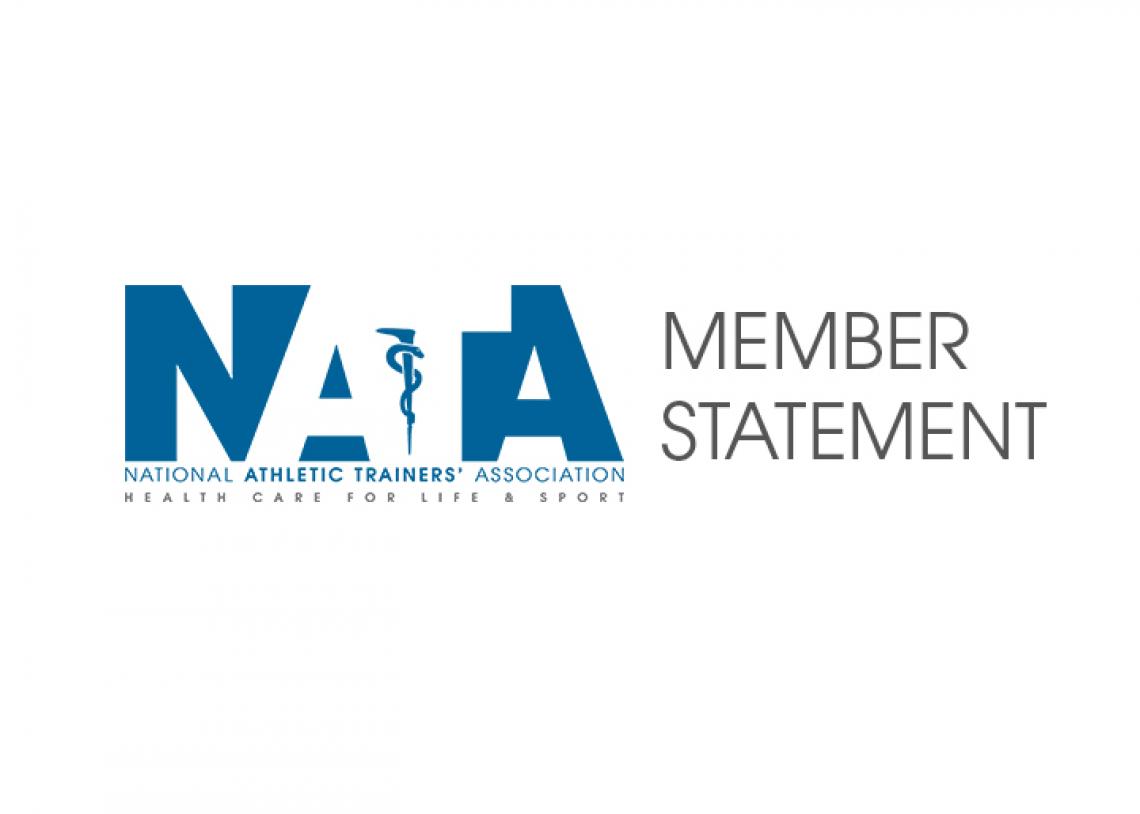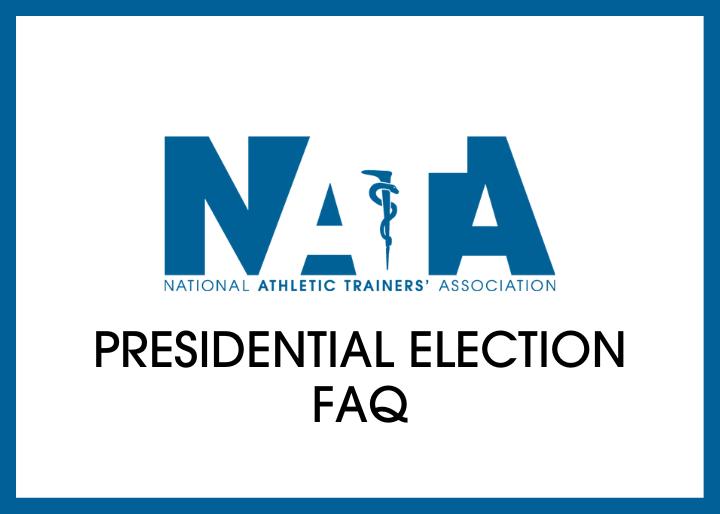Supporting Gender-Affirming Care

In the spring of 2021, the American Medical Association (AMA) issued a statement identifying that when access to gender affirming care is denied, it is “a dangerous intrusion into the practice of medicine.”1 This threat to the basic human rights of individuals in the transgender community has been significantly elevated within the past year. Healthcare professionals, especially athletic trainers (ATs), are uniquely positioned to advocate for the rights of our transgender patients so they can receive gender-affirming care, which “is medically-necessary, evidence-based care that improves the physical and mental health of transgender and gender-diverse people,” according to the AMA.
As healthcare providers bound by the NATA Code of Ethics, ATs have an obligation to provide the best care to all patients, “regardless of the patient’s race, religion, age, sex, ethnic or national origin, disability, health status, socioeconomic status, sexual orientation, or gender identity.”2 When providing care, ATs should also incorporate the National Athletic Trainers’ Association’s six commitments to Diversity, Equity, Inclusion, & Access3 as well as Athletic Training’s Five Shared Professional Values4 of Caring & Compassion, Integrity, Respect, Competence, and Accountability. The NATA Board of Directors and leadership created the six commitments to diversity, equity, inclusion, and access3 to emphasize the need to create an inclusive and welcoming environment within the profession and to ensure that the values of diversity, equity, inclusion, and access are embedded in the work of the Association.
When treating transgender and gender diverse (TGD) patients it is essential for ATs, and other healthcare professionals, to understand the impact of having access to quality gender affirming care. Studies have shown when TGD patients have access to quality gender affirming care, they are at decreased risk of suicidal ideation, psychological distress, and drug and alcohol abuse.5-7 Conversely, when TGD patients are restricted from accessing gender affirming care or gender affirming spaces, studies show they experience higher rates of anxiety, depression, and attempted suicide.8 Regarding healthcare, approximately 25-30% of TGD patients have reported being denied care by their health care provider because of their gender identity.10-11 This results in an avoidance of seeking medical care and an increase in behavioral health conditions including depression, anxiety, suicide ideation, and suicidal attempts.12
ATs develop relationships with their patients based on trust, understanding, and acceptance, and may be the only health care provider patients feel comfortable talking to about their health care needs. The ATs role in the gender affirming process consists of being supportive in the TGD patient’s gender affirmation journey, whether it be socially, such as the use of the appropriate name and pronouns, or support with establishing an inclusive sports medicine team. Society has created a stigma around being TGD or LGBTQIA+. Suicide risk and psychological distress are not inherited traits of being TGD, but rather are a result of the negative impacts from societal perception and treatment.8
Gender affirming care can include medical, legal, and social processes that are the sole decision of the individual. Considering the NATA’s commitments to DEIA and our Code of Ethics, ATs are essential to health care and share a dedication to providing a welcoming and inclusive environment, providing compassionate care for all, and ensuring all patients have access to patient-centered health care. As ATs, we must be committed each day to providing a safe and inclusive environment, not only for our patients, but also our peers. We should never waiver in that commitment.
For more resources on patient care for TGD patients, visit the NATA LGBTQ+ Advisory Committee’s resources page. The NATA LGBTQ+ AC Committee Chair and District Representatives are here to help with any questions or guidance surrounding TGD patient care - contact us.
References
- American Medical Association (AMA) reinforces opposition to restrictions to transgender medical care. June 15, 2021. Accessed May 12, 2022. https://www.ama-assn.org/press-center/press-releases/ama-reinforces-opposition-restrictions-transgender-medical-care#:~:text=Jun%2015%2C%202021&text=%E2%80%9CThe%20AMA%20opposes%20the%20dangerous,%2C%20JD%2C%20MPH%2C%20MBA.
- NATA Code of Ethics. Updated March 2018. Accessed April 7, 2021. https://www.nata.org/membership/about-membership/member-resources/code-of-ethics
- NATA Diversity, Equity, Inclusion, and Access Statement. Accessed May 12, 2022. https://www.nata.org/diversity-equity-inclusion-and-access-commitment
- NATA Shared Professional Values, Accessed May 12, 2022. https://www.nata.org/sites/default/files/prat_5infographichandout-final.pdf
- Turban JL, King D, Kobe J, Reisner SL, Keuroghlian AS. Access to gender-affirming hormones during adolescence and mental health outcomes among transgender adults. PLoS One. 2022;17(1):1-15.
- Turdoff DM, Wanta JW, Collin A, et al. Mental health outcomes in transgender and nonbinary youths receiving gender– affirming care. JAMA Netw Open. 2022;5(2):
- Green AE, DeChants JP, Price MN, Davis CK. Association of gender-affirming hormone therapy with depression, thoughts of suicide, and attempted suicide among transgender and nonbinary youth. J Adolesc Health. 2022; 70(4):643-649.
- 2022 National Survey on LGBTQ Youth Mental Health, The Trevor Project. Accessed May 12, 2022. https://www.thetrevorproject.org/survey-2022/
- Casey LS, Reisner SR, Findling MG, et al. Discrimination in the United States: Experiences of lesbian, gay, bisexual, transgender, and queer Americans. Health Serv Res. 2019;54(2):1454-1466.
- Mirza S, Rooney C. Discrimination Prevents LGBTQ People from Accessing Health Care. Center for American Progress. https://www.americanprogress.org/issues/lgbt/news/2018/01/18/445130/discrimination-prevents-lgbtq-people-accessing-health-care/. Published 2018.
- Jaffee KD, Shires DA, Stroumsa D. Discrimination and Delayed Health Care Among Transgender Women and Men. Med Care. 2016;54(11):1010-1016.
- Sturtevant J. The Impact of Health Care Discrimination on the LGBTQ+ Population. NATA News. June 2020, 31-32.
ADDITIONAL KEY RESOURCES
LGBTQIA+ 101
LGBTQIA+ Terminology 101 The plethora of terms used in the LGBTQIA+ community can seem confusing and overwhelming. The most important thing to keep in mind is to always describe people with the words and pronouns they ask you to use. Terminology evolves, and is updated regularly.
LGBTQ+ Myths and Misconceptions within the Health Care Community. In order to have healthy conversations about LGBTQIA+ issues and needs as it pertains to health care, we must move past stereotypes, myths and misconceptions. In this NATA News article, the NATA LBGTQ+ Advisory Committee aims to clarify some of these myths and misconceptions in order to help athletic trainers better serve as advocates for the LGBTQIA+ community.
The Impact of Health Care Discrimination on the LGBTQ+ Population. This NATA News article highlights the main reasons why LGBTQIA+ individuals experience health disparities: discrimination, stigma, victimization & violence, cultural and social norms that prioritize heterosexual and cisgender individuals, and minority stress associated with sexual orientation and gender identity.
Infographics
LGBTQIA+ Health Care Discrimination Infographic
Checklist for Creating an Inclusive & Welcoming AT Facility
Treating Transgender Student Athletes
Transgender Health Care: Ethical and Legal Considerations for ATs (NATA Now blog, June 2020)
Considerations for Developing a Transgender Policy (Sports Medicine Legal Digest, Summer 2020, pdf)
Understanding Implicit Bias in Health Care. This NATA Now blog post explains implicit bias and provides tools for recognizing and addressing your own bias.
For more information and resources, visit the Inclusion Resource webpage under the Professional Interest section.


